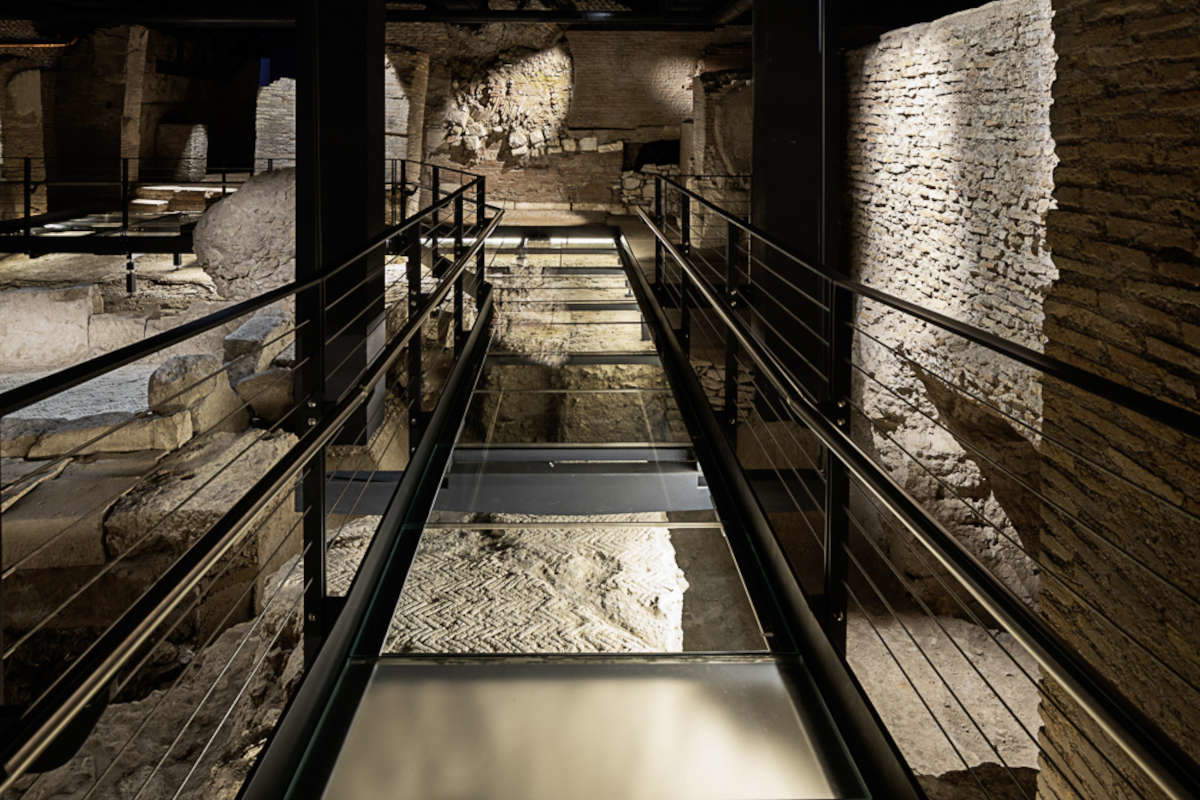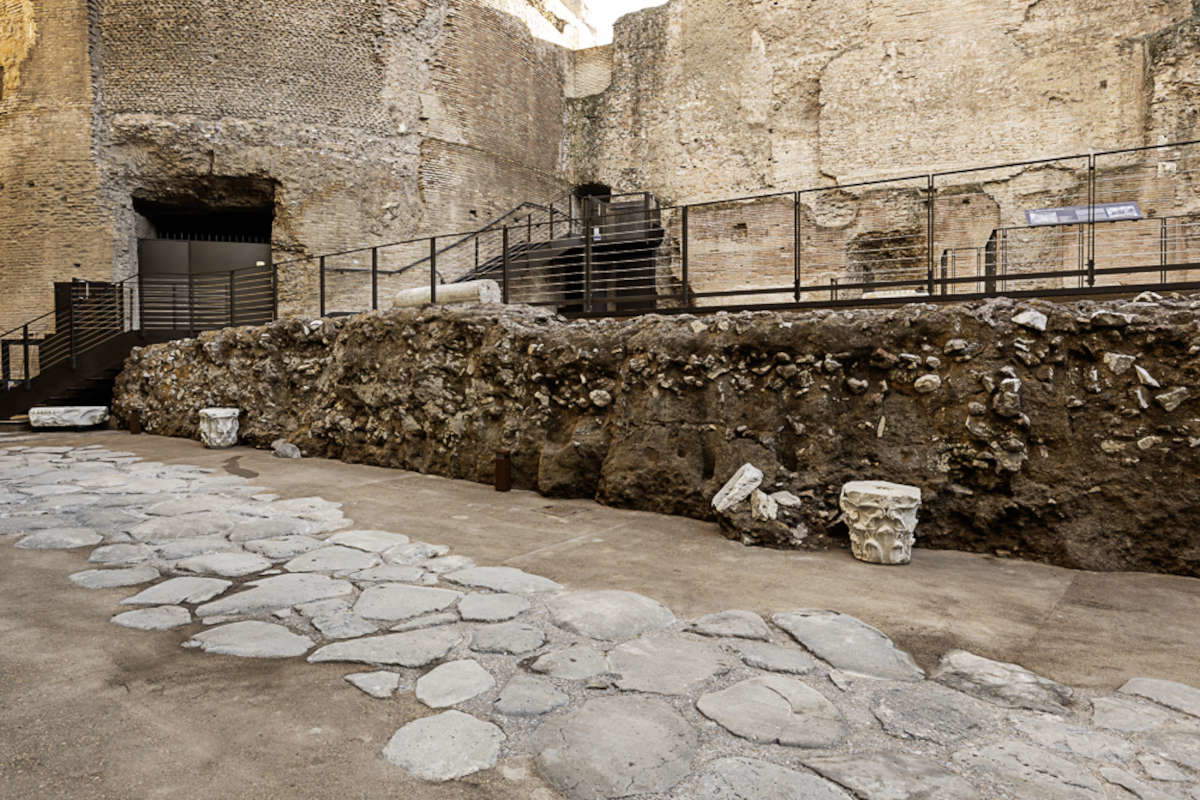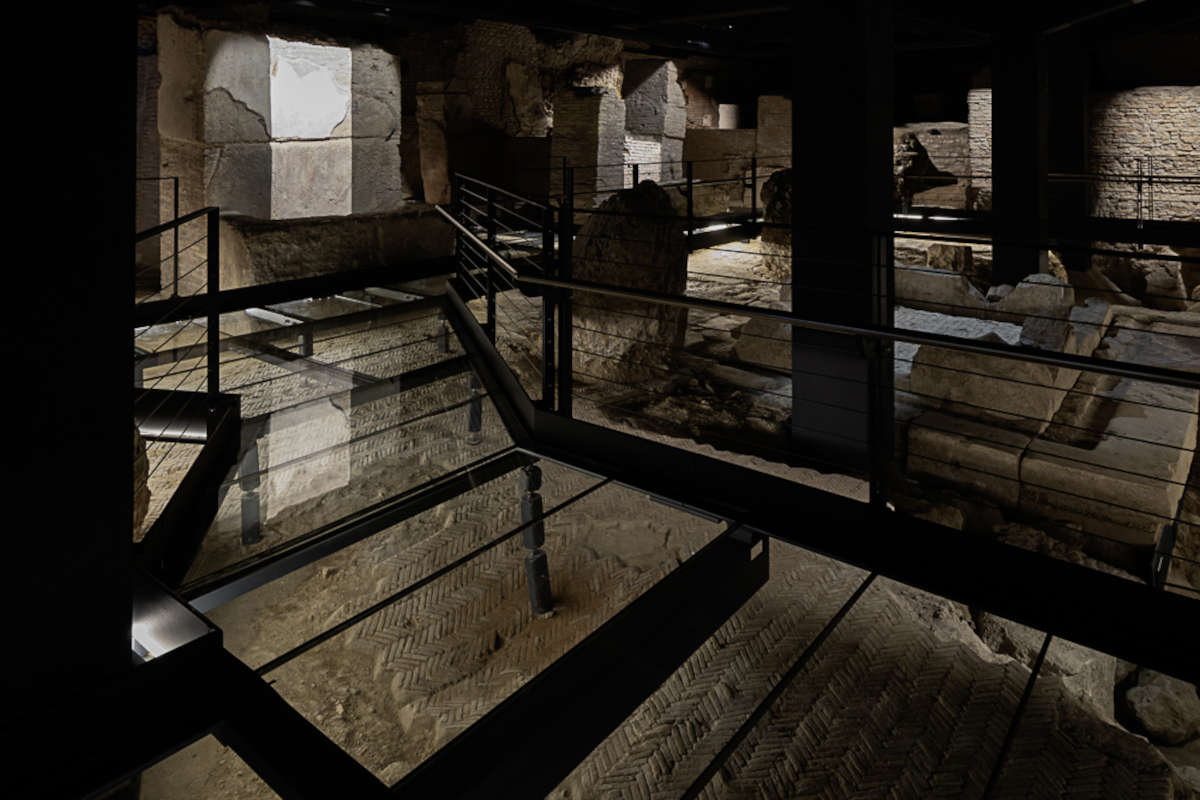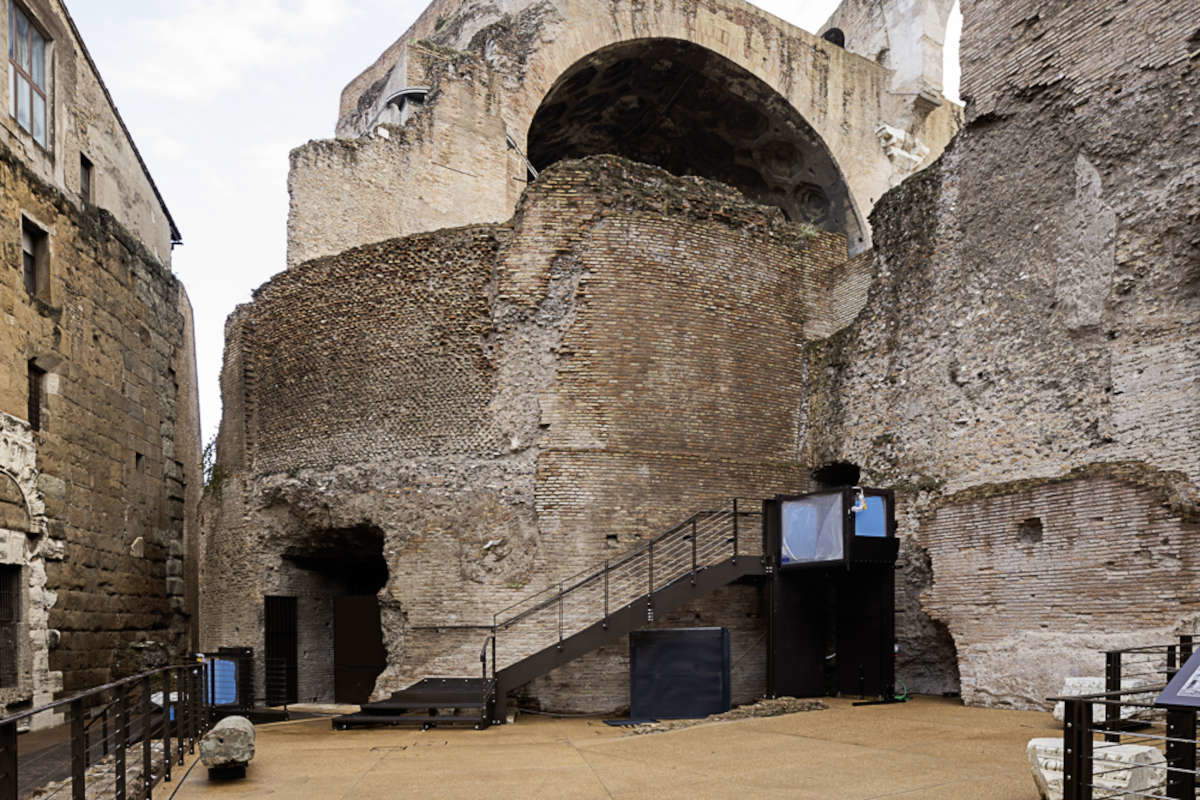A new chapter in the history of ancient Rome opens to the public thanks to the Colosseum Archaeological Park: the Horrea Piperataria, the imperial spice warehouses, become open to visitors for the first time. Located beneath the Basilica of Maxentius, on the southwestern slopes of the Velia, the hill between the Esquiline and Palatine, these ancient warehouses were dedicated to the valuable spice trade, used mainly in medicine and pharmaceuticals.
Mentioned by Pliny the Elder and Cassius Dione as the storehouses “of Egyptian and Arabian spices,” the Horrea Piperataria were built, according to ancient sources, during the reign of Emperor Domitian in an area already designated for the ’storage since the Republican age, on a hill located between the Esquiline and Palatine hills with a stratification ranging from Nero’s planning after the fire of 64 and the monumental programs that Maxentius initiated here around 306-307. It was precisely these continuous transformations of the site that led to the oblivion of the Horrea Piperataria. Their discovery, dating back to 1915 thanks to archaeologist Maria Barosso, had not yet allowed direct public access. Today, thanks to a new entrance located on the ancient alley of the Carinae, which has been completely rearranged and accessible, visitors can immerse themselves in a path of discovery that interweaves history, archaeology and technology.
“The Colosseum Archaeological Park inaugurates and opens to the public a new and fascinating visiting space, after long years of excavations and archaeological research as well as restoration,” comments Alfonsina Russo, director of the Colosseum Archaeological Park. “Underneath the Basilica of Maxentius, and along the so-called Vicus ad Carinas, between Sacra Via and the Forum of Peace, are the warehouses built by Emperor Domitian to store spices and aromas from Egypt, Arabia and India and considered particularly valuable, including herbs with pharmacological properties. The tour offers a narrative that alternates between viewing the archaeological structures and immersive multimedia projections. This opening expands the offerings to the public and, by providing a new addition to the knowledge of the central archaeological area, will help diversify the visitor routes, making the Colosseum Archaeological Park’s offerings even more attractive to visitors from around the world.”





Excavations conducted in 2019 by the Department of Antiquities of Sapienza University of Rome in collaboration with the Colosseum Archaeological Park have revealed new information about the organization and importance of these warehouses, and in particular have allowed for a deeper clarification of the floor plan of these warehouses where valuable spices, used mainly for medical and pharmaceutical purposes, were stored. The Horrea Piperataria, structured on several levels and articulated around porticoed courtyards with tanks and wells, constituted a hub of the Roman Empire’s complex logistics system for the management and distribution of spices.
These assets were considered of extreme importance: some provinces of the Empire used spices as prestige goods for the payment of taxes. They were also central to ancient medicine, a tradition that has left significant traces in the neighborhood. For example, it was in this very area that Arcagatus, Rome’s first public physician, lived, while the famous Galen of Pergamum owned an “apotheca,” or storehouse of precious goods, here to keep his remedies.
The medical-health vocation of the place continued over the centuries, until the Christian era, with the dedication of a basilica to the medical saints Cosmas and Damian, dating from 526, and installed inside one of the halls of the Temple of Peace. Then later, on March 8, 1429, Pope Martin V donated to the Universitas Aromatariorium Urbis (the College of Apothecaries) the church of St. Lawrence built within the Temple of Antoninus Pius and Faustina. This tradition continues to this day with the Nobile Collegio Chimico Farmaceutico, heir to the Universitas Aromatariorum Urbis, which carries out cultural and academic activities in the pharmaceutical field.





The Horrea Piperataria enhancement project stands out for its innovative approach that combines archaeology and technology. The layout includes a multimedia and lighting path that guides the visitor through the millennial history of the site. It starts from the alley of the Carinae and reaches the underground rooms of the warehouses, where a glass walkway hanging from the attic allows unobstructed views of the ancient structures.
The dimness of the spaces is interrupted only by video projections and light effects that gradually illuminate the architectural elements, creating an evocative atmosphere. The immersive experience is accompanied by information panels and multimedia narratives that reveal the various construction phases of the site, from the remains prior to Nero’s fire in 64 A.D. to later interventions.
The route, designed to be a journey through time, follows a reverse chronological order, starting with the most recent layers and going back to the origins of the area. This narrative choice allows visitors to fully grasp the evolution of the neighborhood, with a stratification that reflects the political, economic and cultural changes of ancient Rome.
The Horrea Piperataria can be visited from December 21 every Tuesday, Thursday and Saturday at 10 a.m., 11:45 a.m. and 1:15 p.m. (visits in Italian) and at 10:30 a.m., 12:15 p.m. and 1:45 p.m. (visits in English). Guided tours are compulsory and cost 8 euros. The duration of the tour is 75 minutes: 30 minutes of visiting and 45 minutes of multimedia.
 |
| Rome rediscovers the Horrea Piperataria: imperial spice warehouses open to the public |
Warning: the translation into English of the original Italian article was created using automatic tools. We undertake to review all articles, but we do not guarantee the total absence of inaccuracies in the translation due to the program. You can find the original by clicking on the ITA button. If you find any mistake,please contact us.